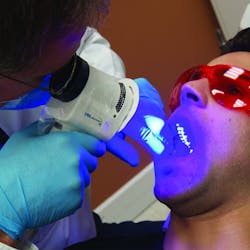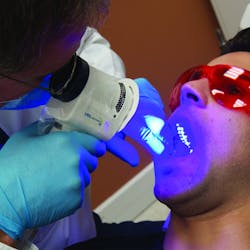Oral Cancer Detection: Seeing What Your Eyes Can't See
A dental practice thrives on the processes which promote optimum care for the patient. The 6-month hygiene appointment gives the clinician a periodic opportunity to reinforce the care philosophy of the practice and introduce any newly-adopted technologies. Patients tend to be quite receptive to new protocols especially when introduced as part of the normal screening procedures rather than as an exception based on clinician concern during the appointment.
It is important for patients to understand the value of the screening process when it comes to oral cancer and the risks attached to late discovery. Introducing a “See to Treat Pathway” into practice protocol is based on early discovery of oral mucosal abnormalities through regular oral cancer exams. The VELscope® Vx device fits within the oral cancer prevention protocols of a dental practice. Its powerful tissue fluorescence visualization technology allows the clinician to “see” beneath the oral mucosal tissues to uncover and monitor early signs of mucosal abnormalities and disease.
With this device, clinicians can incorporate the 2-minute VELscope® Vx examination into every hygiene appointment, take white-light and fluorescence images with the built-in camera system, and keep precise records of their patients’ oral health.
Upon discovery of suspicious oral lesions, swift follow-up is possible. Referrals to specialists/surgeons can be accompanied with clear photographs and, most importantly, the patient stands to benefit from the favorable recovery statistics associated with early discovery.
Intertwined with the emotional and physical benefits to the patient is the inherent reduction of oral cancer treatment expenses that early intervention offers.

